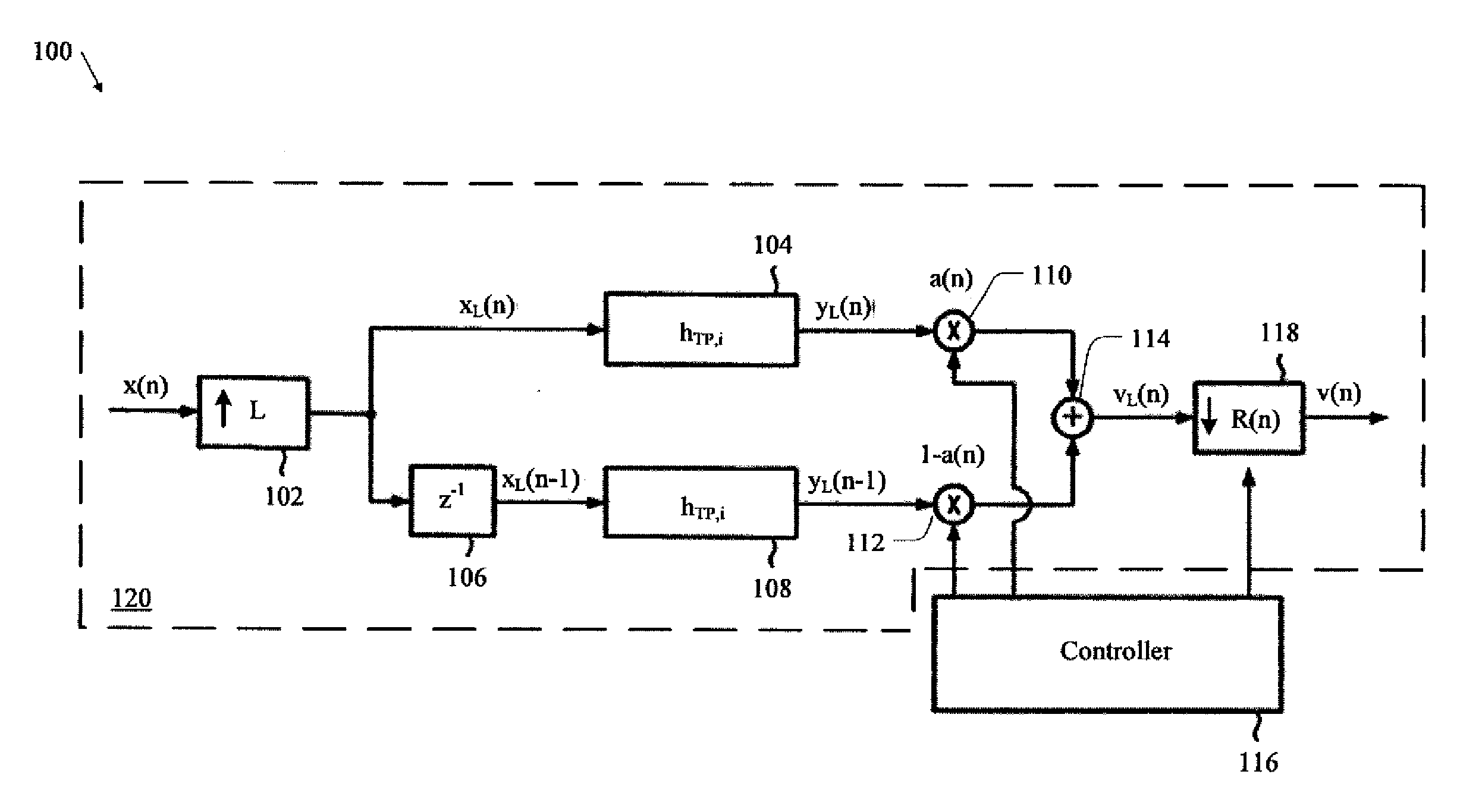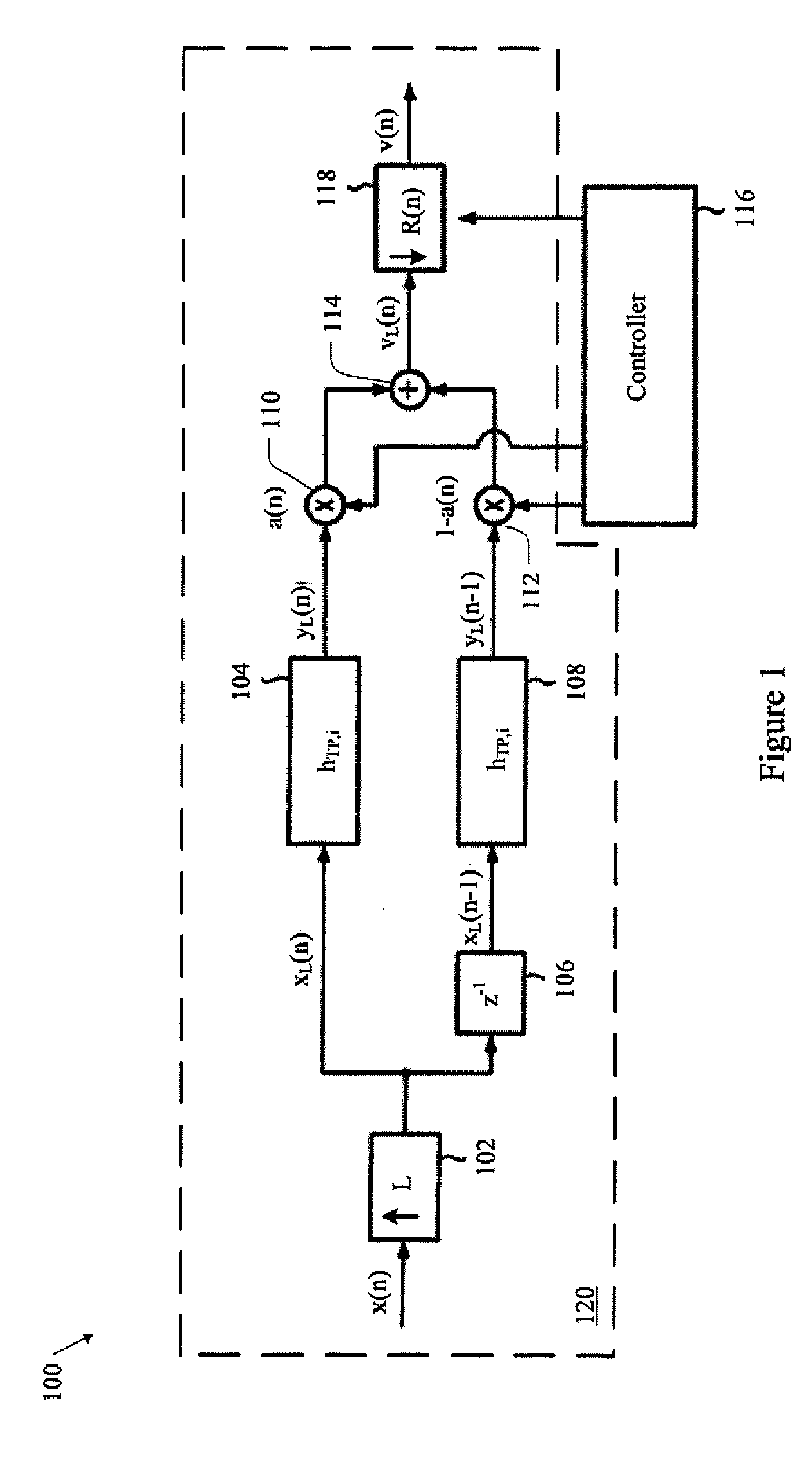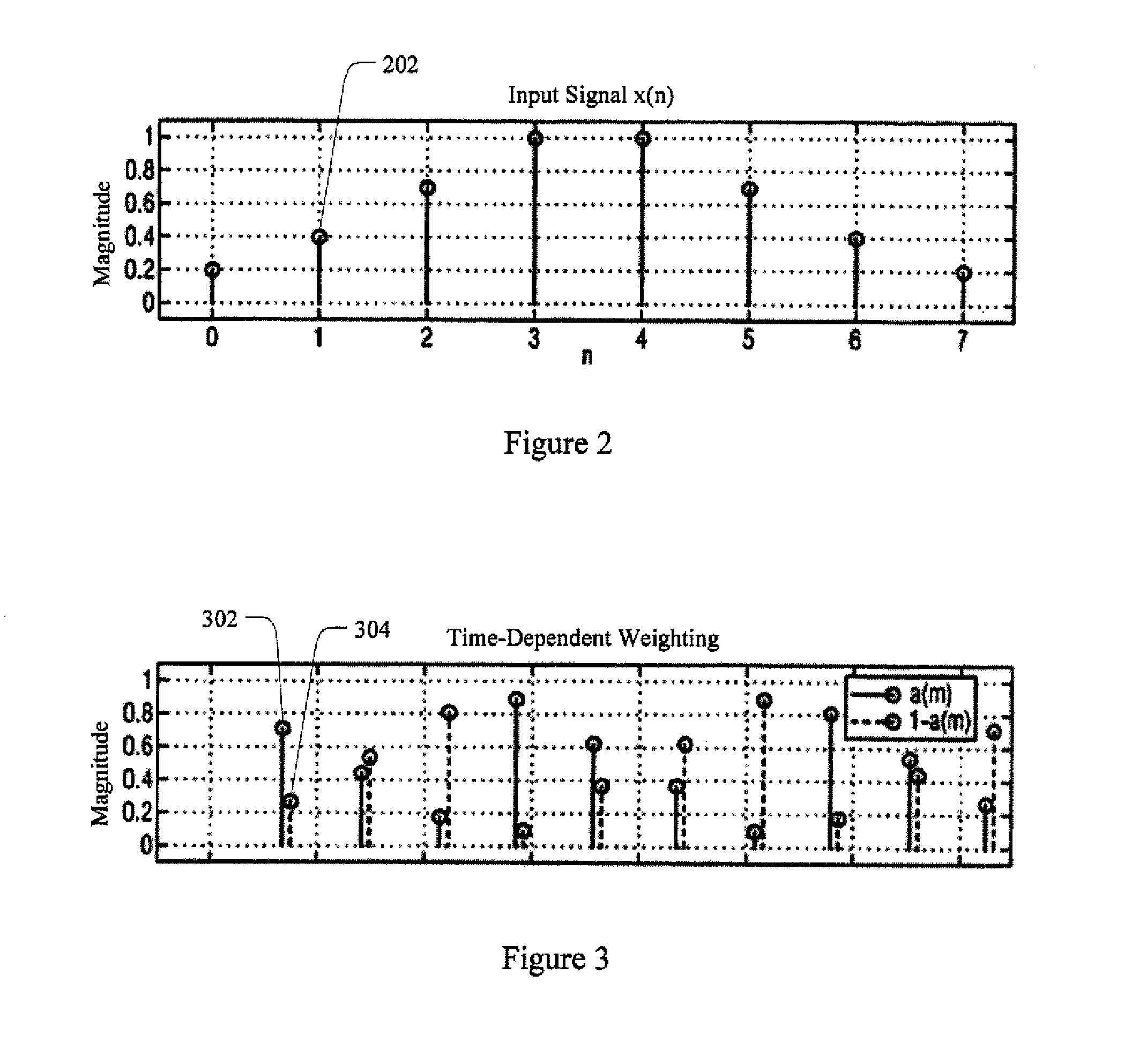Sampling Rate Conversion System
a conversion system and signal technology, applied in the field of signal processing, can solve the problems of system needing a long computing time to perform calculations, severe limiting speech quality, and large amount of resources, and achieve the effects of reducing signal processing burden, reducing computing time and memory resources, and reducing processing and memory resources
- Summary
- Abstract
- Description
- Claims
- Application Information
AI Technical Summary
Benefits of technology
Problems solved by technology
Method used
Image
Examples
Embodiment Construction
[0022]A sampling rate conversion system adapts the sampling rate of an input signal into a different sampling rate for an output signal. The input signal may be a digital signal sampled from an analog signal at an input signal sampling rate. The system may generate an output signal from the input signal using logic that implements up-sampling, filtering, time-delaying, weighting, adding, and other operations. The system may also filter the signal during processing using a low-pass filter that may be a finite impulse response filter. The system may also down-sample an intermediate signal (such as the signal obtained by the adder) to produce the output signal. The system may generate time-dependent sampling rates for the output signal and / or the input signal by using buffers or other logic. The sampling rate conversion system may use a relatively small amount of computing resources and memory, thereby freeing the device that processes the signal to devote more resources to other usefu...
PUM
 Login to View More
Login to View More Abstract
Description
Claims
Application Information
 Login to View More
Login to View More - R&D
- Intellectual Property
- Life Sciences
- Materials
- Tech Scout
- Unparalleled Data Quality
- Higher Quality Content
- 60% Fewer Hallucinations
Browse by: Latest US Patents, China's latest patents, Technical Efficacy Thesaurus, Application Domain, Technology Topic, Popular Technical Reports.
© 2025 PatSnap. All rights reserved.Legal|Privacy policy|Modern Slavery Act Transparency Statement|Sitemap|About US| Contact US: help@patsnap.com



